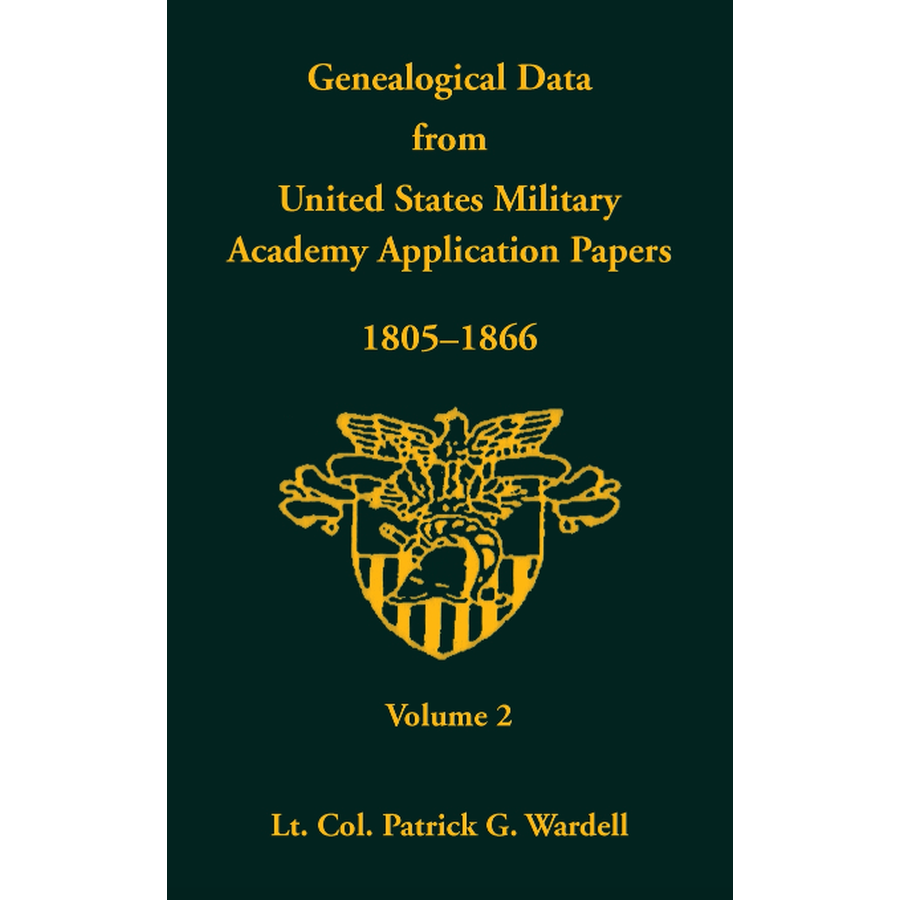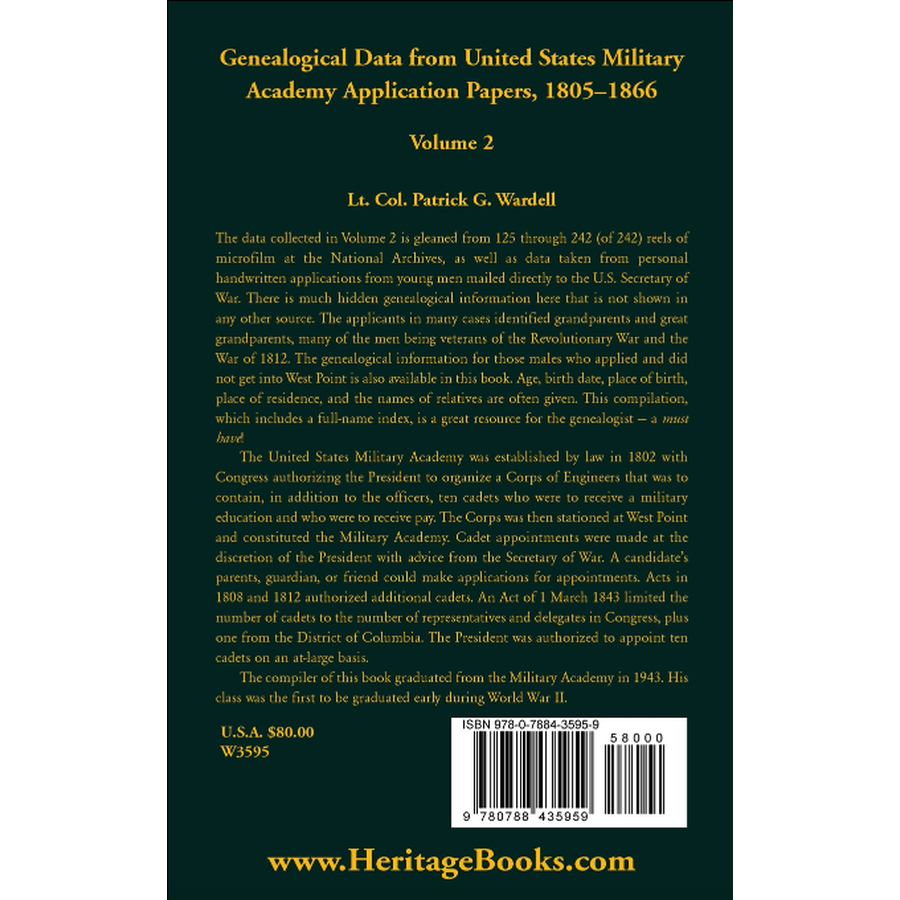Genealogical Data from United States Military Academy Application Papers, 1805-1866, Volume 2
Couldn't load pickup availability
The data collected in Volume 2 is gleaned from 125 through 242 (of 242) reels of microfilm at the National Archives, as well as data taken from personal handwritten applications from young men mailed directly to the U.S. Secretary of War. There is much hidden genealogical information here that is not shown in any other source. The applicants in many cases identified grandparents and great-grandparents, many of the men being veterans of the Revolutionary War and the War of 1812. The genealogical information for those males who applied and did not get into West Point is also available in this book. Age, birth date, place of birth, place of residence, and the names of relatives are often given. This compilation is a great resource for the genealogist-a must have!
The United States Military Academy was established by law in 1802 with Congress authorizing the President to organize a Corps of Engineers that was to contain, in addition to the officers, ten cadets who were to receive a military education and who were to receive pay. The Corps was then stationed at West Point and constituted the Military Academy. Cadet appointments were made at the discretion of the President with advice from the Secretary of War. A candidate's parents, guardian, or friend could make applications for appointments. Acts in 1808 and 1812 authorized additional cadets. An Act of 1 March 1843 limited the number of cadets to the number of representatives and delegates in Congress, plus one from the District of Columbia. The President was authorized to appoint ten cadets on an at-large basis.
The compiler of this book graduated from the Military Academy in 1943. His class was the first to be graduated early during World War II.
Patrick G. Wardell
(2007), 2022, 6" x 9", case-laminate, index, 604 pp.
ISBN: 9780788435959
101-W3595

